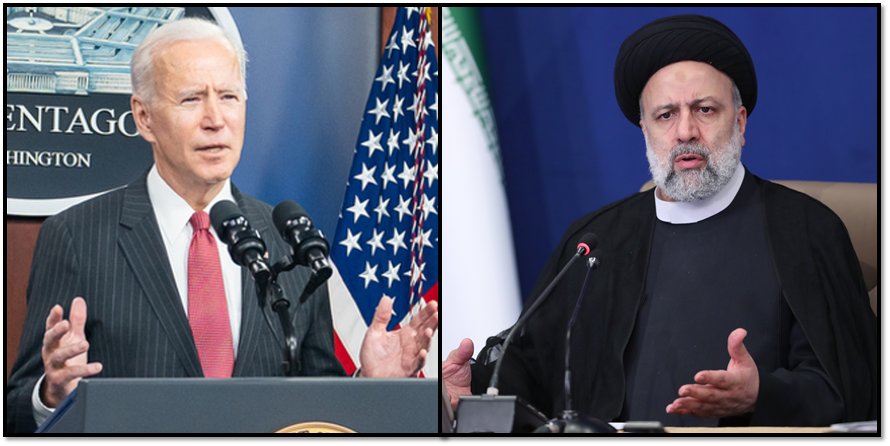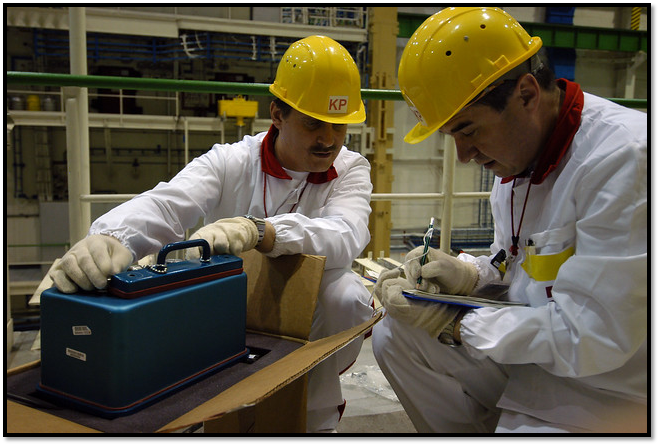Five years after the U.S. withdrawal from the Iran nuclear deal, the unique international diplomacy, which originally brought together the world’s six major powers to prevent Tehran from getting the bomb, had seriously eroded. New flashpoints diverted attention to other hotspots. By May 2023, the international community was focused on other global threats, notably Russia’s aggression in Ukraine and China’s threats on neighboring Taiwan. The unusual consensus that had been achieved during years of intense diplomacy by rival powers—including the United States, Russia, China and three European nations—dissipated as they diverged on other foreign policies.

The momentum to revive the deal, abandoned by President Trump in 2018, was further sucked out of diplomacy after Iran rejected terms proposed by the six nations in August 2022. The hardline government of President Ebrahim Raisi appeared to abandon the prospect of improving relations with the West as Tehran increasingly pivoted, in trade and military ties, to the China and Russia. “Unfortunately, Iran has repeatedly refused to engage in meaningful diplomacy on the nuclear front, and now they are taking actions across numerous fronts that make diplomacy even harder,” Secretary of Defense Lloyd Austin said on Jan. 10, 2023.
On the fifth anniversary of the U.S. withdrawal, three experts—Kelsey Davenport of the Arms Control Association, Valerie Lincy of the Wisconsin Project on Nuclear Arms Control, and Naysan Rafati from the International Crisis Group—analyzed the effectiveness of the U.S. and Iranian strategies as well as potential paths forward.
Did the United States or Iran have a better strategy after the U.S. withdrawal? Which was winning? Which was losing five years later?
Kelsey Davenport: "As of May 2023, neither side was winning. The U.S. and Iranian strategies put the countries on a path to conflict. The escalatory spiral is not sustainable, and the risk of miscalculation is high. Despite the U.S. pressure campaign, Iran was closer to a nuclear weapon than at any point in the past. Iran’s strategy of nuclear advancement, however, did not deliver the sanctions relief package that Tehran sought as part of a return to the JCPOA. The advances complicated negotiations.
Both sides also faced domestic political opposition to a deal or concessions. In the short term, Iran has the advantage of so-called 'escalation dominance.' Tehran could ratchet up its nuclear program more quickly than the United States and its partners could build additional sanctions pressure. But Tehran – given its advances – had little space to escalate without crossing U.S. or Israeli redlines.
Valerie Lincy: "Neither side was winning. But Iran’s strategy seemed more successful. Tehran appeared to be weathering the sanctions imposed by Washington while continuing to advance its nuclear program and managing domestic unrest caused by economic hardship. Meanwhile, the United States was not reaching its nonproliferation goal. But if the U.S. strategy pivots more squarely toward pressure, the balance could shift. given the timeline for sanctions to work and the economic and political situation in Iran. That pivot appeared to be in motion given Iran’s refusal to engage in good faith negotiations since 2021 and its military transfers to Russia. But the sanctions remained largely unilateral, which limited their impact."
Naysan Rafati: "Neither side was particularly satisfied with the state of play. The United States and its European allies faced a nuclear program that posed a growing concern. Iranian development and transfer of arms, which has long been a worry in the Middle East, extended to the conflict in Ukraine. Western powers were also worried about potential regional escalation.
"Iran’s government faced deep sociopolitical discontent, significant economic problems and increasing diplomatic isolation from the West. It has sought to offset those challenges with closer ties to Russia and China as well as improving relations with Gulf neighbors. But those moves were not long-term solutions."
What were the most feasible alternatives to the JCPOA in mid-2023?
Kelsey Davenport: "The most feasible alternative to the JCPOA would be for both the United States and Iran to stop the cycle of escalation and create time for further diplomacy. The goal could be to negotiate a comprehensive deal to replace the JCPOA. In the meantime, Iran could increase transparency by allowing U.N. inspectors greater access to sites and monitoring equipment. It could also halt or slow sensitive proliferation activities such as enriching uranium to 60 percent and installing advanced IR-6 centrifuges at Fordo, a facility buried deep under a mountain.

"In exchange, the United States could refrain from imposing additional sanctions targeting the Iran’s nuclear program and unfreeze Iranian assets held abroad. The United States and its partners could also offer limited and reversible sanctions relief, such as waivers on oil exports that would allow Tehran to earn some revenue. This would not be a long-term solution, but it could break the pattern of escalation and reduce the chance of miscalculation.
Valerie Lincy: "One option for Western powers would be to acknowledge that the JCPOA cannot be revived and to take the formal step of ending the deal by triggering the “snapback” of all U.N. sanctions that were in place before the deal. This path is technically feasible because the case that Iran has violated the terms of the JCPOA would be easy to make. But the European parties to the deal – Britain, France and Germany – have not been willing to invoke the mechanism. Triggering snapback would not halt Iran’s progress toward a nuclear weapon, but it would help broaden the U.S. pressure campaign and provide international legal authority to countries interested in joining that effort. Expanded pressure could be coupled with a proposal of “less for less” – a limited deal that would constrain the most worrisome aspects of Iran’s nuclear program and allow for some enhanced monitoring in exchange for limited sanctions relief."
Naysan Rafati: "One option would be for the Western powers to focus on a more limited arrangement that zeroes in on the most concerning elements of ongoing Iranian nuclear activity: the stockpiling at near weapons-grade and curtailed international oversight. That would defuse the possibility of further escalation. But a limited deal would be at best a short-term fix in return for concessions that neither side was keen to make. And it raised more fundamental questions:
- If the JCPOA cannot be revived, which of the principles that underpinned it still apply?
- Is the P5+1 – Britain, China, France, Germany, Russia and the United States – still a viable vehicle?
- Does the core bargain of sanctions relief in exchange for nuclear restrictions still hold?
- Is isolating the nuclear issue from other areas of concern – such as human rights and support for terrorism – a diplomatically or politically realistic proposition any longer?
"As of mid-2023, the United States and European countries appeared to be brainstorming tactical alternatives, but after two decades of nuclear diplomacy, the rethink should be more strategic."
